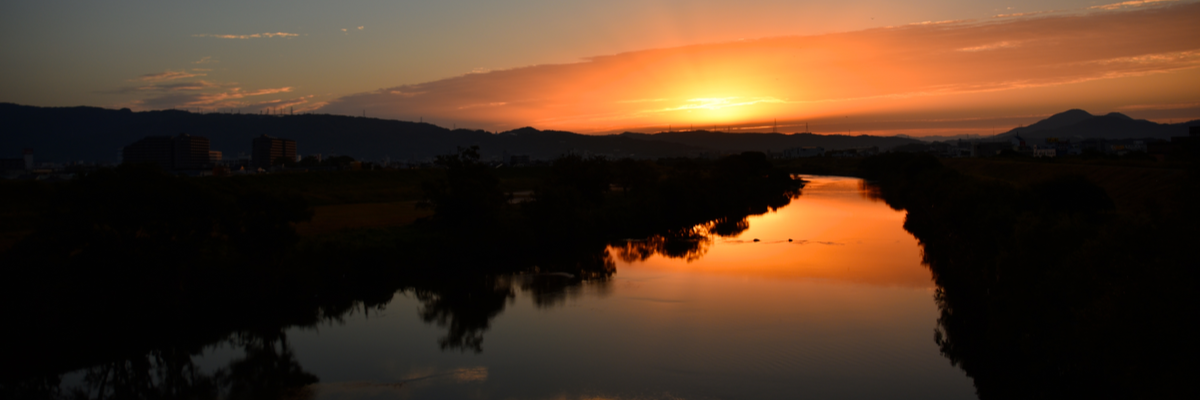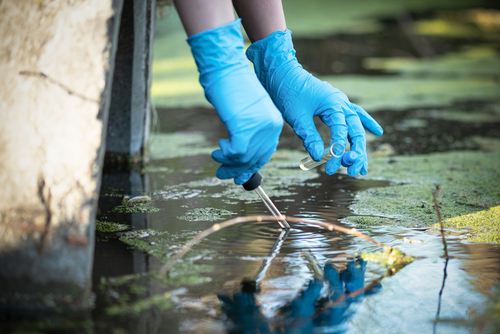Natural environment of the Kuyavian-Pomeranian Voivodeship. Today and tomorrow
A large terrain diversity, picturesque hills and vast steppe, the sinuous Vistula and numerous postglacial lakes. The most characteristic feature of the voivodeship area is the location at the site of the crossing point of two valleys – the meridian valley of the Vistula river and the parallel path of the glacier valley. However, the landscape of the Kuyavian-Pomeranian Voivodeship is also painted in dark colours. The natural reservoirs here are unevenly distributed (similar to green areas, the percentage of which is only 23%), and their high pollution levels are a very broad subject. The Marshal's Office of the Kuyavian-Pomeranian Voivodeship takes up the glove and carries out large-scale action aimed at changing this state of things.
The priority is to create different forms of nature protection. There are 31 protected landscape areas covering less than 20% of its area throughout the Kuyavian-Pomeranian Voivodeship. These include:
- 10 landscape parks (covering a total area of 238.8 thousand ha, which is 13% of the total area of the voivodeship).
- 30 protected landscape areas (with its natural, historical, cultural and landscape values).
- Bory Tucholskie Biosphere Reserve (part of the International "Human and Biosphere” Programme).
The Marshal’s Office of the Voivodeship attaches great importance to the preservation of this unique heritage. As part of the project "Formulating Documentation on Protected Landscape Areas for the Assessment of the Preservation and Value of Landscapes Highlighted with Landscape Audit Elements", a design documentation of 30 protected landscape areas was produced in 2016 and 2017. Its effect is the resolutions of the Regional Council of the Kuyavian-Pomeranian Voivodeship, containing numerous systemic regulations in force in areas of protected landscape.

A number of other measures have also been undertaken to preserve and restore natural heritage, including:
More here: http://parki.kujawsko-pomorskie.pl/wpk
Water thirsty for purity
 Surface water pollution (mainly nitrates) is associated with agricultural land, which in this region is close to 65 percent. Thus, most of the lakes located within the voivodeship are reservoirs with typical agricultural catchments. The Nitrate Directive adopted in 1991, requiring EU Member States to work together to combat water pollution, which is a result of agricultural activities, does not produce spectacular results in the area for the time being.
Surface water pollution (mainly nitrates) is associated with agricultural land, which in this region is close to 65 percent. Thus, most of the lakes located within the voivodeship are reservoirs with typical agricultural catchments. The Nitrate Directive adopted in 1991, requiring EU Member States to work together to combat water pollution, which is a result of agricultural activities, does not produce spectacular results in the area for the time being.
However, Bydgoszcz can be proud of these, having built two large and efficient sewage plants that meet the highest environmental standards. Large funds are also spent on the modernization of the sewage network. The effect? Sewage no longer flows from the river, the quality of which has significantly improved in the city.
It is possible to breathe deeply
Who wants to enjoy really good quality air, can plan a holiday in the Kuyavian-Pomeranian Voivodeship. Actions taken here for years to reduce pollution have tangible benefits. The numbers speak for themselves:
- 44% - by this much sulphur dioxide emissions reduced from especially cumbersome plants (comparison of 2013 and 2018 data).
- 351-fold decrease in sulphur dioxide emissions in 2019 (compared to 2016), due to the launch of a modern combined heat and power plant in Toruń.
- 11-fold decrease in dust emissions.
- 3-fold decrease in nitrogen oxides emissions.
- Nearly 100% decrease in benzo(a)pyrene emissions (from 39 kg in 2016 to 0.0024 kg in 2019).
Education is the foundation
The guarantee of a good quality environment and sustainable development of civilization is... human and his proper eco-education. In the Kuyavian-Pomeranian Voivodeship, great emphasis is placed on instilling the right habits and behaviors, from an early age.
For this purpose, professional teaching bases are being established throughout the region, in the form of natural and environmental education centers with the accompanying field infrastructure created in landscape parks. Various types of teaching paths, sheds, observation towers and tourist slides are created from scratch or are being modernized using the resources of the voivodeship and Regional Operational Programmes WK-P. 20 such centres are now in operation.
I like to be here ... in the green!
In the framework of education (not only children and young people, but also entrepreneurs from areas located within and around landscape parks), in 2017-2020 the Kuyavian-Pomeranian Voivodeship implemented the project "Education of the Community of Protected Areas of Kuyavian-Pomeranian Voivodeship. I like to be here ... in the green!".
The main objective of the project, supported by an information and education campaign, was to increase the environmental awareness of the inhabitants of the Kuyavian-Pomeranian Voivodeship regarding the value of the protected areas of the voivodeship, knowledge of the forms of their protection and the benefits for the current and future inhabitants. This was made possible thanks to the organization of workshops, field trips, classes in schools and kindergartens, and day trips, among other things.
75,000 people benefited from the project, which cost nearly 4.5 million zlotys. The funds came from, inter alia, the Infrastructure and Environment Operational Programme 2014-2020 (NFOŚiGW), the WFOŚiGW in Toruń and the Voivodeship's own resources. The project was implemented from the beginning of 2017 to the last day of 2020. More can be read HERE.
Summary
The Kuyavian-Pomeranian Voivodeship will spare no resources for pro-environmental investments to respect raw materials and energy and to tackle adverse climate change. A well-organized nature conservation and environmental education system of the local community and the spatial dispersal of landscape parks ensure that all residents of the region have equal access to them.
The biggest challenge for the region in the coming years is to improve water quality and achieve the required level of recovery and recycling. It remains to be hoped that proper pro-environmental education will help. Let the knowledge gained during workshops and field trips not go to waste!
Author: TOGETAIR based on information provided by the Marshal's Office of the Kujawsko-Pomorskie Voivodeship,





